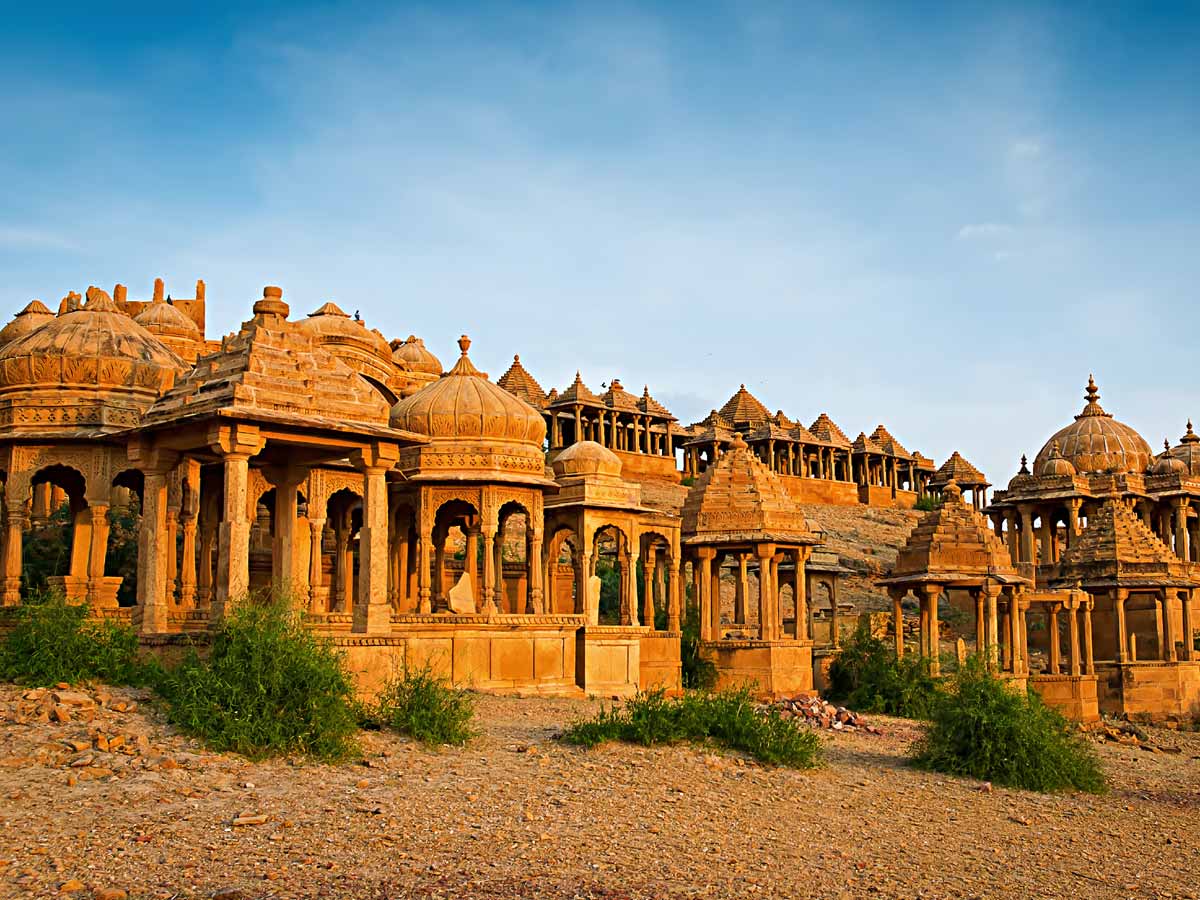One of the relics of Rajasthan's illustrious past, Bada Bagh in Jaisalmer is primarily a series of cenotaphs set amidst a garden. The glorious golden cenotaphs gleam in the deserts of Jaisalmer and the adjoining garden. It is located about 6 kms north of Jaisalmer, on the way to Ramgarh. Bada Bagh, translated literally as 'Big Garden', is a garden complex nestled between Jaisalmer and Lodhruva in Rajasthan. This is a popular site because it is a garden that has the cenotaphs of all the Maharajas and other prestigious family members of Jaisalmer; all royal Rajputs kings of 6 centuries!
Bada Bagh is actually located on a small hillock and the entrance to the cenotaphs is set at the bottom of the hill. The setting of Bada Bagh is dramatically stunning. The chhatris are the same colour as the landscape around them, a dull brown of the sand, and hence, appear like a mirage in the desert. The towering windmills in the distance only add up to the beauty this site has to offer. The bases of the various chhatris at Bada Bagh are square or hexagonal. The domes, however, can be found in a variety of shapes, ranging from a simple circular, to squarish to a slight pyramid shape. These are free from any kind of artwork, and only depict some information about the Raja they depict in particular.

History of Bada Bagh
Maharaja Maharawal Jai Singh was the one who originally commissioned the construction of Bada Bagh. He initiated the creation of a dam in the desert as a water tank, during his reign to service the subjects in his kingdom. The presence of the dam brought life to the entire periphery with flora and fauna booming with joy and brought into existence a green patch of natural beauty in the orange desert. Maharawal Jai Singh was delighted with the unexpected success of this venture.
When he passed away on September 21, 1743, his son Lunkaran built a 'chattri' in his memory next to the lake. This marked the beginning of a new tradition for the rulers of the Bhatti Dynasty, and a new cenotaph was added to this garden to commemorate the memory of each king of this dynasty. However, in 1947 when one of the princes passed away due to a mysterious disease in the first year of his succession, the tradition was discontinued because it was believed to be a bad omen.
Jaisalmer tourism is one of the best known in the state of Rajasthan as it is full of hospitality. Jaysalmar (or Jaisalmer) is a nicknamed as ‘The Sun City’ and ‘The Golden City’ for it’s bright, hot days and golden colored sand. Alike other Rajasthani cities, Jaisalmer tour will take foreigners towards forts, and other architectural monuments and there are lots of Jaisalmer tourist places to visit in the winters.